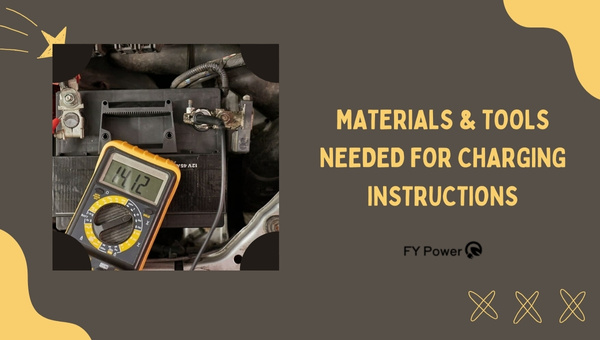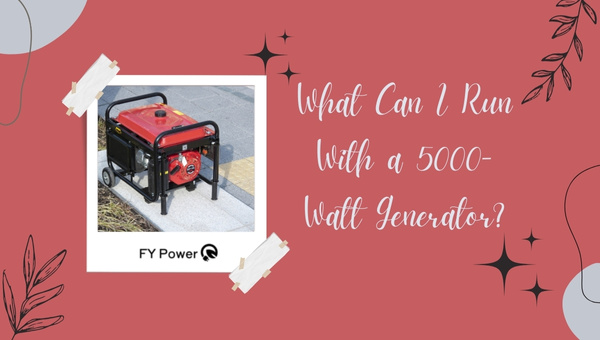Have you ever found yourself scratching your head, trying to figure out how to hook up a charge controller to your battery? You’re not alone! Understanding battery charging instructions can be a game-changer when it comes to managing your power system.
And guess what? I’m here to make that process as simple as flipping a light switch. Picture this: you, mastering the art of energy storage setup with ease and confidence. Sounds good, right?
Correctly linking a charge controller with your battery ensures efficient energy use and prolongs the life of your battery. It’s like finding the secret ingredient that makes your favorite dish unforgettable—it just clicks!
These three straightforward steps will guide you through connecting it all together; from safety first practices, adding a fuse for protection, to making sure every cable is snug and secure on the terminals.
Materials & Tools Needed for Charging Instructions
To ensure effective charging, gather the necessary materials and tools. These typically include the specific charger for your device, a compatible power source or socket, and any adapters required for different regions or types of outlets.

Materials Required for Effective Battery Charging
When I’m about to set up a battery for charging, especially with a solar charge controller, there are some things I absolutely need. Here’s the list:
- Solar Charge Controller: This is like the brain of the operation.
- Battery Cables: Big wires to connect the battery and controller.
- Fuses: Small safety devices that protect against too much current.
- Battery Bank: Where power is stored – it could be just one or several batteries linked together.
- Mounting Hardware: Screws or brackets to hold everything in place.
To ensure everything connects safely and soundly, one must have:
- A solar charge controller – this manages how power flows into the battery. It’s a must-have to keep both your battery and panels from damage.
- Quality battery cables – thick wires that can carry electricity from your panels to your battery without getting too hot or wasting power.
- Fuses or circuit breakers – these are super important! If too much electricity tries to pass through, they break the current and save your gear from getting fried.
- A dependable battery bank – it could be just one big battery or several tied together; this is where all that power you’re generating gets stored.
- The proper mounting hardware – because you don’t want stuff moving around; it needs to stay put where you install it.
Essential Tools to Follow Battery Charging Instructions
Having my materials ready isn’t enough; I also grab some tools that make sure my hands can do what my head’s planned:
- Wire strippers: To take off insulation when connecting wires safely.
- Wrenches: For tightening nuts and bolts so nothing comes loose unexpectedly.
- Voltmeter: To check electric pressure (voltage) and ensure everything’s working right on my energy storage setup.
Let me go easy with words here:
Firstly, wire strippers are handy when I need to expose bare wire inside those thick cables which makes them ready for a good connection.
Next, many types of wrenches join forces in my toolbox because nuts and bolts come in different sizes – they help me tighten things without breaking a sweat.
Lastly but importantly, having a voltmeter can save me from guessing games while checking if voltage levels are right during this whole power system integration process.
Just like building anything else sturdy in life, having both good materials and tools by my side makes sure when I follow those “battery charging instructions,” all goes smoothly without any hiccups or accidents!
Also Read: What will a 3000-watt generator run?
Step-by-Step Guide to Connect Charge Controller to Battery
To properly link a charge controller to a battery, some steps need to be followed. I’m going to share how I usually do it, breaking down each step with lots of detail.
Step 1: Safety First – Preparing for Battery Charging Instructions
Working with any electrical component can be dangerous if you aren’t careful. For me, safety is the most important part. Here’s what I always pay attention to:
- Wear Safe Clothing: Long sleeves and pants can protect you from sparks or accidental spills.
- Protect Your Hands: Gloves are a must. They keep your hands safe from cuts or any electrical shock.
- Shield Your Eyes: Flying debris can hurt your vision, so goggles or a face shield are non-negotiable.
- Turn It Off: Make sure the charge controller and other connected devices are powered down before starting.
This step is about preparing at its finest and making sure accidents stay away from my workspace.
Step 2: Connecting Fuse – Key to Successful Battery Charging Instructions
Fuses are critical in protecting against current overloads which could lead to damage or even fire. Here’s how I make sure they’re connected right:
- Choose the Proper Fuse: Check the manual for the recommended amp rating.
- Disconnect Power Sources: All switches should be in the off position.
- Secure Fuse Block Close to Battery: It should go on the positive wire within 18 inches of your battery.
- Tighten Connections Without Stripping Them: Snug enough that they won’t wiggle free but not so tight that threads strip.
Properly installing a fuse gives me peace of mind, knowing my setup is safeguarded against potential overcurrent situations.
Also Read: Solar USB Charging: Build Your Own in 7 Easy Steps
Step 3: Secure Charge Controller Connections Following Proper Battery Charging Instructions
When it comes time to join cables from the charge controller and battery, precision is key:
- Identify Positive and Negative Terminals: Positive usually has a red coating or a plus sign; negative has a black coating or a minus sign.
- Match Cables Correctly: Never mix up these terminals—it’s vital!
- Prepare Wires:
- Strip ends using wire strippers—make sure not too much; just enough bare wire should show.
- Connect terminals tightly using wrenches but gently enough not to damage them.
Once all cables are attached securely without being overly tightened (so no risk of snapping), I feel relieved knowing every bit is connected properly without any fuss.
Also Read: Who Makes Predator Generators?
FAQs
What Is The Right Way To Implement Solar Battery Charging Instructions?
The right way to put solar battery charging instructions into action is by following a detailed guide. Get the right materials, such as a charge controller, fuses, and cables. Make sure you connect everything safely and securely, keeping in mind the voltage requirements of your battery.
Can I Modify My Existing Wiring To Fit Newer Battery Charging Instructions?
Yes, you can modify your existing wiring to accommodate the new battery connection guide, but it’s crucial to understand your system’s current layout. Refer to the manufacturer’s guidelines for proper wire sizes and circuit protection when making changes. It might be wise to consult with an expert if you’re unsure.
Conclusion
I hope these simple steps have made the task of connecting a charge controller to a battery-less daunting. It’s always important to remember that patience and attention to detail go a long way in ensuring your energy storage setup works safely and efficiently. With the proper materials, tools, and step-by-step guidance, you’re all set for successful power system integration.
Key Takeaways From This Post:
- Always prioritize safety by using protective gear and turning off all devices.
- Gather all required materials like the charge controller, battery cables, and fuses before starting.
- Use essential tools such as wire strippers and wrenches for secure connections.
- Correctly connecting a fuse is crucial for effective operation.
- Meticulous attachment of battery cables to the charge controller is key.

